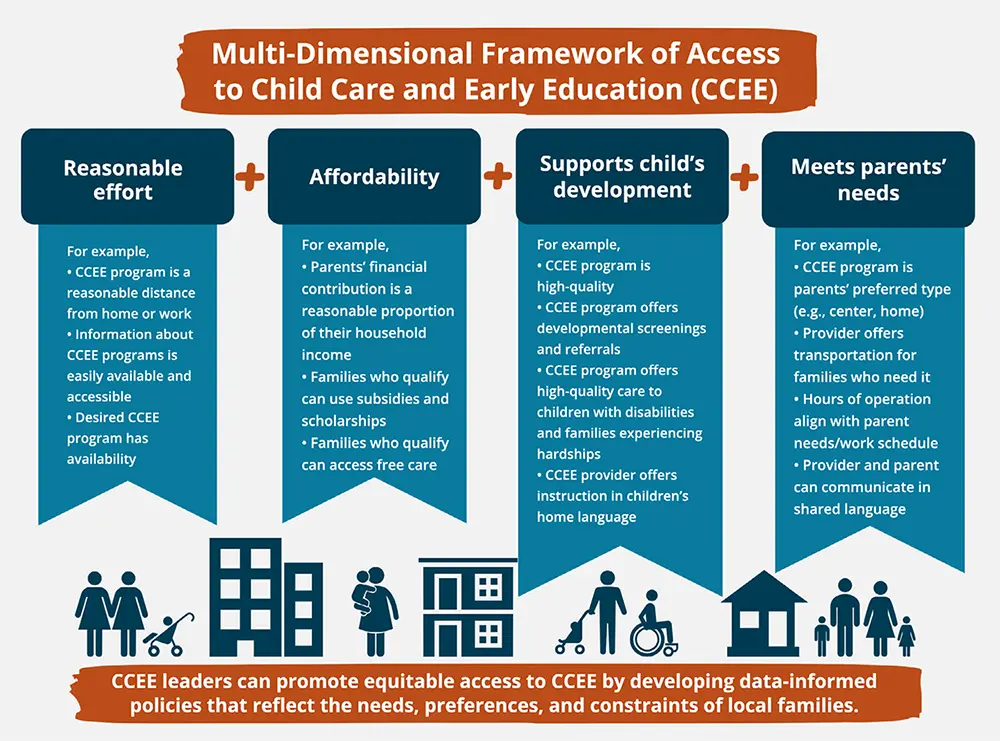Defining and Measuring Access to Child Care and Early Education with Families in Mind
Access is often measured in terms of supply (i.e., capacity) of licensed child care and early education (CCEE) centers and family child care (FCC) homes. Sometimes it is measured by counting the number of families who use different types of CCEE. These metrics assume that a large supply of or high use of CCEE means it is accessible to families. Recent research shows that these types of calculations overestimate families’ access to CCEE because they do not account for what families search for, prefer, and need. The Access Guidebook introduced a definition of access that is centered on families and acknowledges four dimensions that families consider when choosing CCEE: access means that parents, with reasonable effort and affordability, can enroll their child in an arrangement that supports the child’s development and meets the parents’ needs. This multi-dimensional definition can help policymakers develop and refine policies that promote greater equitable access to child care for the families they serve.

This Highlight is part of a collection of resources that translate research into short formats for child care and early education leaders. The information in this Highlight draws from two research reports: 1) Defining and Measuring Access to High-Quality Early Care and Education (ECE): A Guidebook for Policymakers and Researchers; and 2) Measuring and Comparing Multiple Dimensions of Early Care and Education Access.
This brief is part of the Child Care and Early Education Policy and Research Analysis (CCEEPRA) project. CCEEPRA supports policy and program planning and decision-making with rigorous, research-based information.
© Copyright 2024 ChildTrendsPrivacy Statement
Newsletter SignupLinkedInThreadsYouTube